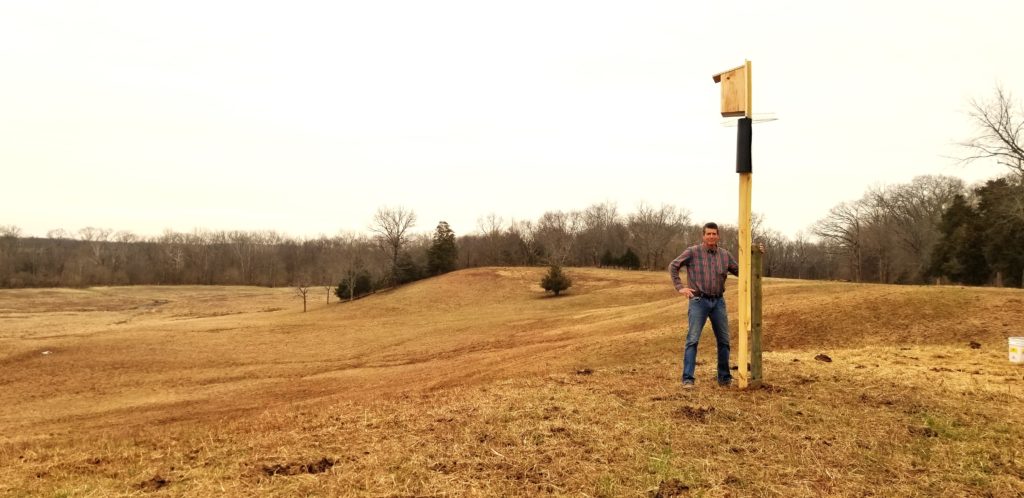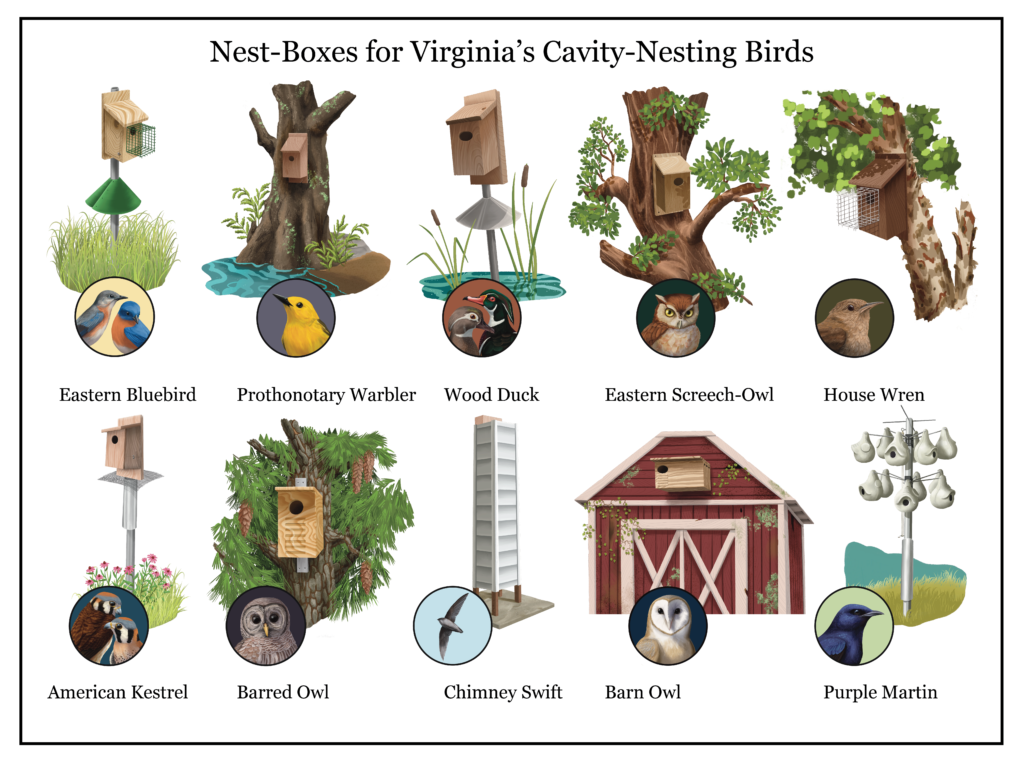

Nest Box Program
Many species of birds that use grasslands for forage and cover do not necessarily nest directly in the grasses. Some require natural cavities, which often come in the form of old woodpecker holes in snags (dead, standing trees). For this reason, you should leave snags untouched on your property so long as they don’t pose a safety hazard.
Fewer available snags mean fewer cavities, so installing nest boxes can help fill the gap. Nest boxes also allow researchers to band and track adult and fledgling birds, providing insights to breeding biology, movement, foraging, and habitat preferences.
Finally, nest boxes are another way landowners can connect and engage with many at-risk bird species, generating an even greater level of stewardship over those birds and the habitats on which they depend.

Nest Box Guide for Virginia’s Cavity Nesting Birds
Nest-box Guide: This resource showcases 10 different cavity-nesting species in VA that can make use of nest-boxes.
VGBI offers the following services for nest boxes:
- Advice on which cavity-nesting species could benefit from nest boxes on your property
- Advice on where to place those nest boxes
- Options for procuring the boxes you need
Building your own boxes:
Cornell’s NestWatch website is a treasure trove of great information on nest box building, placement, installation and orientation. Start with this resource!
For American Kestrel boxes, consult the following blueprints by Bob Dean and Art Gingert.
For Barn Owl boxes, consult the following blueprints by Steve Simmons and Wild Farm Alliance. And take a look at some different styles and setups used locally here.
For Tree Swallow and Eastern Bluebird boxes (both species can use the same box style), consult either of the following blueprints from the Virginia Bluebird Society or Cornell’s NestWatch Program.
For Purple Martins, refer to the knowledge and advice of the Purple Martin Conservation Association. Their Purple Haze film is also very informative.
For Wood Ducks, consult Duck Unlimited’s box design and predator guard system, as well as supplemental information on placement and habitat.
Deterring House Sparrows:
Bobby Whitescarver, in his post Identify and Deter the House Sparrow From Nesting Boxes, does a great job of summarizing some methods that work!
American Kestrels:
For landowners within our 16-county work region that have one or more American Kestrel nest boxes installed on their property, please be sure to read over our Stewardship & Monitoring resource to learn more about how to care for these birds and their boxes.
Watch our videos to learn how researchers build and monitor nest boxes and band Kestrels!

